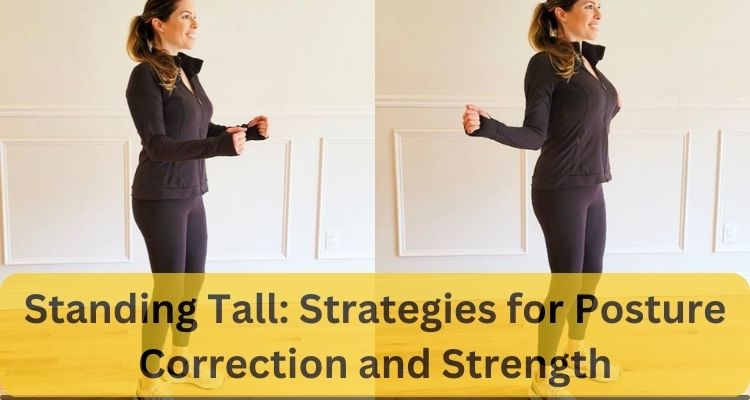Posture plays a crucial role in our overall health and well-being. It affects everything from our confidence to our physical comfort and even our internal organ function. Yet, in today’s sedentary world dominated by screens and long hours of sitting, poor posture has become increasingly common. However, the good news is that with the right strategies, it’s possible to correct and strengthen your posture. In this blog post, we’ll explore effective techniques and exercises to help you stand tall with confidence.
Understanding Posture
Before diving into corrective strategies, it’s essential to understand what good posture entails. Proper posture involves the alignment of your body parts in a way that puts minimal strain on your muscles and ligaments while supporting the spine’s natural curves. This alignment allows for efficient movement and reduces the risk of pain and injury.
Common Posture Problems
Several factors contribute to poor posture, including prolonged sitting, improper ergonomics, weak muscles, and lack of awareness. The most common posture problems include:
- Forward head posture: This occurs when the head juts forward, straining the neck and upper back muscles.
- Rounded shoulders: Rounded shoulders often result from slouching and can lead to shoulder pain and restricted breathing.
- Kyphosis: Kyphosis is an excessive rounding of the upper back, causing a hunched appearance.
- Lordosis: Also known as swayback, lordosis involves an exaggerated curve of the lower back, leading to lower back pain and instability.
Strategies for Posture Correction and Strength
Mindful Awareness:
Start by becoming aware of your posture throughout the day. Regularly check in with yourself to notice any slouching or misalignment. Mindful awareness is the first step towards making lasting changes.
Strengthening Exercises:
Strengthening the muscles that support good posture is essential for long-term improvement. Focus on exercises that target the core, back, shoulders, and neck. Some effective exercises include.
- Planks: Strengthen the core muscles to support the spine.
- Rows: Target the muscles between the shoulder blades to improve shoulder alignment.
- Shoulder blade squeezes: Help to counteract rounded shoulders by strengthening the upper back muscles.
- Neck stretches: Stretch the neck muscles to alleviate tension and promote proper alignment.
Stretching and Mobility:
Flexibility plays a crucial role in maintaining good posture. Incorporate regular stretching and mobility exercises into your routine to release tension and improve your range of motion. Focus on areas prone to tightness, such as the chest, hip flexors, and hamstrings.
Ergonomic Optimization:
Evaluate your work environment and make necessary adjustments to promote better posture. Ensure that your desk, chair, and computer setup are ergonomically designed to support proper alignment. Use tools such as lumbar pillows or standing desks to reduce strain on your spine.
Postural Awareness Exercises:
Practice specific exercises designed to improve postural awareness and alignment. For example, wall angels involve standing with your back against a wall and sliding your arms up and down while maintaining contact with the wall. This exercise helps reinforce proper shoulder and spine alignment.
Lifestyle Modifications:
Make small lifestyle changes to encourage better posture throughout the day. Take frequent breaks from sitting, incorporate movement into your routine, and focus on maintaining proper alignment during daily activities such as walking and lifting.
Professional Guidance:
Consider reaching out to a chiropractor in Salt Lake City, along with consulting a physical therapist or posture specialist, for a personalized assessment and recommendations. These professionals can offer tailored exercises and techniques designed to address your unique needs and goals, helping you achieve better posture and overall well-being.
Conclusion
Standing tall with proper posture is achievable with dedication and consistent effort. By incorporating strategies such as strengthening exercises, stretching, ergonomic optimization, and postural awareness into your routine, you can improve your posture and overall well-being. Remember that small changes add up over time, so be patient and persistent in your pursuit of better posture.
With time and effort, you’ll not only look taller and more confident but also feel stronger and more comfortable in your body. So, stand tall, shoulders back, and embrace the benefits of good posture for a healthier, happier life.


